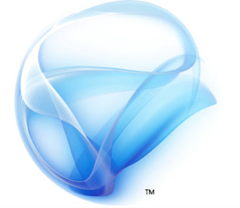
There is still a lot of discussion around the behind the scenes jossling for the Microsoft Yahoo merger or acquisition. A recent post discussed the implications for Australian Media Landscape. TechCrunch have posted about the an internal Microsoft email, the topic - Why the Yahoo/Microsoft merger is a good thing.
Helping Microsoft is some of the world’s major advertisers. At the time that Microsoft’s move became public, Sir Martin Sorrell, the chief executive of WPP, the number two marketing and advertising group worldwide, said that he believed a combined group would give Google some healthy competition.
Something of particular focus for us in Australia is what will happen to the Yahoo7 and NineMSN? A question and answer within the leaked email adds some light...
Q: How would we address the multiple brands and technologies within Live, MSN, and Yahoo!? Which brand would we keep?
A: Both Microsoft and Yahoo! have great brands and technologies. Yahoo! has a very strong consumer brand and we are committed to build on the Yahoo! brand as a major part of the combined products and services we deliver to customers. The Yahoo! brand is one of the reasons the combination of the two companies would create so much value. It is premature to say which aspects of the brands and technologies we would use in our combined offerings. As part of the integration planning effort, it is important that we enable a joint team of leaders from Microsoft and Yahoo! to make thoughtful decisions about brands and technologies. How we integrate Microsoft and Yahoo!’s brands, products, and services are the types of decisions that would be made during this integration planning process—by leaders from both companies—and implemented over time after the transaction closes.
An extract from the email ...
From: Kevin Johnson
Sent: Friday, February 22, 2008 12:48 PM
To: Platforms & Services Division
Subject: Update on Yahoo! Proposal
I want to provide all employees in the Platforms & Services Division with an update on our February 1 proposal to combine with Yahoo!, and answer a few common questions that have been asked.
As we’ve discussed, the online advertising industry is growing rapidly and is expected to be an $80B industry by 2010. We believe our proposal is a compelling one and that the combination of Yahoo! and Microsoft creates a more credible alternative to an increasingly dominant player in the advertising industry. We are committed to building great services for consumers while delivering great value to advertisers and publishers. We have been very thoughtful about this combination, and are excited about what our two companies can do together to collectively target growth opportunities in online services, search, and advertising.
It is important to remember that, while we have made what we believe to be a very compelling proposal for Yahoo! shareholders and employees, we do not have an agreement in place with Yahoo! at this time. While Yahoo!’s Board and management consider our proposal, let me share a perspective on the process going forward:
While Yahoo! has issued a press release rejecting our proposal, we continue to believe we have a full and fair proposal on the table. We look forward to a constructive dialogue with Yahoo!’s Board, management, shareholders, and employees on the value of this combination and its strategic and financial merits.
TechCrunch went on to comment that this email was written to be leaked to the public. Messages like "The industry needs a more compelling alternative in search and online advertising," and "we will dedicate significant rewards and compensation to Yahoo! and Microsoft employees" to retain key staff.
News Corp challenge for Yahoo
Back last year there were rumours that News Corp execs wanted to swap MySpace for Yahoo. The Time Online reports ...
News Corporation has discussed swapping MySpace, its internet social networking unit, with Yahoo! in return for a 30 per cent stake in the enlarged group.
The discussions remain tentative and could collapse after the departure of Terry Semel as Yahoo!’s chief executive and his replacement by Jerry Yang this week. Mr Yang, co-founder of Yahoo! and incoming chief executive, yesterday pledged to “dig in” to his new role, and acknowledged the difficult task he faces to arrest the decline in the internet portal’s shares.
News Corp, the parent company of The Times, is interested in a deal even if it means losing some control of MySpace because it would give the media group exposure to a far larger internet-based business.
Other News Corp digital assets, including the games network IGN, bought in 2005 for $650 million (£326 million), are also thought to have been offered to Yahoo!.

.jpg)


